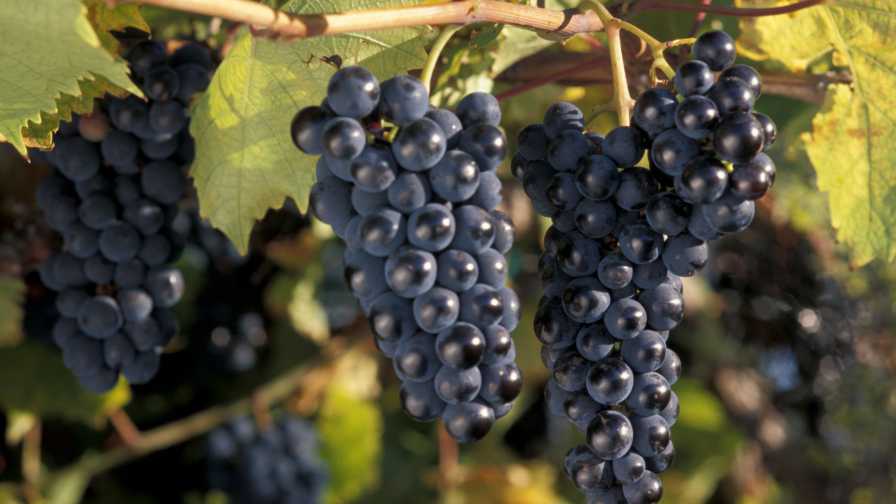What To Know about Seasonal Calcium Accumulation in Grapevines
Calcium (Ca) is a critical macronutrient for all plants, including grapevines. The divalent cation (Ca2+) serves structural roles in cell walls and membranes, is an important counter‐cation for inorganic and organic anions in the vacuole, and is an intracellular messenger in the cytosol.
Calcium is among the most abundant elements within Earth’s crust and is present in various soil minerals, including phosphates, silicates, sulfates, and carbonates. Weathering of these minerals releases Ca2+ ions, which may then be adsorbed onto organic and inorganic colloids, thus contributing to clay flocculation, particle aggregation, and soil structure. Calcium adsorbed on the surface of soil colloids and in the soil-solution is available for plants, and most agricultural soils have an adequate supply of Ca.
Calcium deficiency symptoms are rarely observed on grapevines but may be expected on quartz, gravelly, or sandy soils that are strongly acid (pH < 4.5). Symptoms include restricted canopy development, leaf blade necrosis beginning at the leaf margins and advancing in steps toward the petiole, cluster necrosis, decreased fruit set, premature fruit shriveling, and restricted root growth.
On the primary bark of shoots, dark brown pimples up to 1 mm in diameter may develop. If soil-based fertilizing is necessary, there are many liming materials and fertilizers that can supply Ca, including calcite, dolomite, hydrated lime, gypsum, calcium nitrate, and calcium chloride. Some Ca-containing fertilizers are suitable for foliar application.
Calcium moves through soil via mass-flow and is taken up through young, unsuberized root tips. Calcium is translocated from roots to shoots via the xylem in the vine’s transpiration stream. Calcium may “leak” from the xylem laterally, but it isn’t redistributed via the phloem, so Ca transport through a plant is generally considered “unidirectional” from the roots to the shoots. Therefore, grapevines accumulate a lot of calcium in their annual growth but mostly in leaves and to a lesser extent stems.
In contrast, the import of Ca into grape berries diminishes with development and virtually ceases after veraison, when xylem flow to the berries is greatly diminished and the ripening grapes become primarily phloem-fed tissues. Consequently, grape berries are inherently low in Ca, as compared to leaves or stems (see Figure 1 below).

Graphic courtesy of Matthew Fidelibus
Table grape growers often wish to boost grape berry Ca content, as high Ca levels in fruit are believed to promote fruit firmness and reduce susceptibility to rot. However, studies with grapevines and other fleshy fruits has shown that soil-applied calcium fertilizers do not necessarily affect fruit calcium content or prevent or ameliorate calcium deficiency disorders in fruits. This is likely because of the limited mobility of Ca in phloem, as discussed previously. Foliar Ca fertilizers have also been studied to determine if they can overcome the inherent vascular mobility constraints that limit Ca accumulation in grape berries. Results of published studies are inconsistent, with foliar applications sometimes but not always improving fruit firmness and reducing bunch rots.
Nematodes, phylloxera or other soil pests that feed on grapevine root tips could theoretically inhibit Ca uptake, and environmental factors that suppress transpiration, such as dry soil or humid weather, also decrease Ca uptake. Calcium may interact with other elements to affect uptake or availability. For example, ammonium, Mg, K, and Na, can interfere with Ca uptake. In acid soils, Ca may bind with Al and Fe hydroxides. Phosphorus favors Ca uptake in acid soils but reduces Ca availability in basic soils due to formation of calcium phosphates. Nitrates usually increase Ca uptake, and B and Ca can impart synergistic benefits to actively growing tissues. Increased soil pH due to excess liming can induce Fe, Mn, B, or Zn deficiencies. Additional research is needed to better understand how Ca may affect firmness of table grapes and what management practices most effectively increase grape berry Ca content.
In contrast with table grape growers, wine grape growers may wish to minimize grape berry Ca content, as excess Ca in must can result in the formation of crystalline calcium L-tartrate, which reduces the quality of bottled wines. Calcium is normally highest in musts from “wet” years in vineyards with particularly calcium-rich (limestone) soils and/or where calcium-based “sunscreen” products have been applied. Calcium-containing fertilizers, such as calcium nitrate, can also increase vine calcium content, although not necessarily in the fruit, as discussed previously.
If high Ca in musts is a concern, winemaking sources of calcium should also be considered, including calcium carbonate, casein or other milk products for fining, and fermentation or storage in concrete tanks. Measuring the level of Ca in juices or wines and adjusting the winemaking procedures when required may be the most practical method of avoiding calcium instability problems, since cultural practices often have inconsistent effects on grape berry Ca content, as discussed previously. Nevertheless, wine grape growers whose fruit may contain excess Ca levels should review their cultural practices in the vineyard to determine if any practices could contribute to Ca enrichment.









